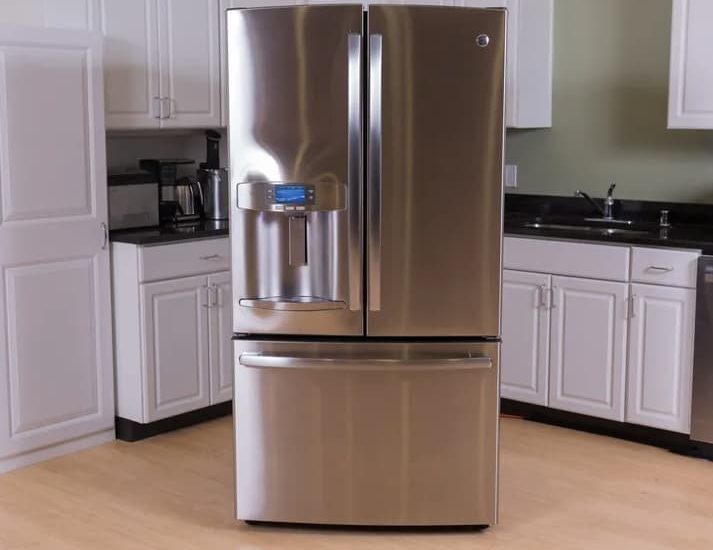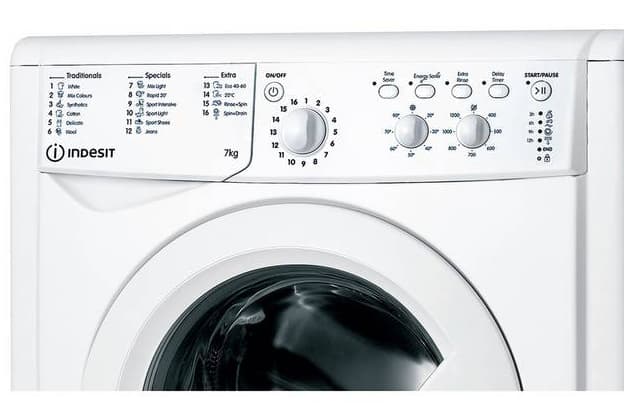GE Profile Bottom Freezer Not Freezing – Few things can be as disconcerting as opening your freezer, expecting a blast of cold air, only to be met with lukewarm disappointment. The essence of a freezer is to maintain our food’s quality, freshness, and nutritional integrity. A malfunction, therefore, isn’t merely inconvenient – it’s a breach of a domestic contract.
GE Profile Bottom Freezer Not Freezing

Freezers, like all appliances, are prone to a panoply of issues that can manifest over time, with GE freezers being no exception. This guide aims to elucidate these complications and provide actionable remedies.
How Does GE Freezer Work?
Every appliance boasts its unique machinations, a symphony of parts working in harmony. To truly comprehend the reason behind your GE freezer’s misbehaviors, one must understand its basic operations.
- How a typical GE freezer operates: Driven by a compressor, it circulates refrigerant through coils, extracting heat from inside and releasing it outside. This continuous cycle keeps the interior cold.
- Key components and their roles: Components such as the condenser, evaporator, and various fans maintain the temperature and distribute cold air efficiently throughout the freezer.
Preliminary Troubleshooting of GE Freezer
Before delving deep, start with a superficial inspection. Often, simple oversights are the culprits.
- Ensuring the power source is intact: Basic? Yes. Essential? Absolutely. A tripped circuit or an unplugged cord can sometimes be the reason behind the non-functionality.
- Recognizing the significance of the right temperature settings: Ensure the thermostat is set to a conducive freezing temperature, typically between -10°F and 0°F.
- Importance of regular maintenance checks: Being vigilant and conducting periodic checks can preclude many issues from arising in the first place.
Delving Into the Door Issues
The gateway to your freezer’s cold realm must be impermeable. Even minute inconsistencies can wreak havoc.
- The science of freezer seals: Gaskets create an airtight seal, ensuring the cold air remains ensconced within.
- How a minor gap can disrupt freezing: A trifling breach in the seal can let warm air infiltrate, compromising the freezer’s efficacy.
- Tips to ensure a good seal: Clean gaskets periodically and inspect for wear and tear, replacing if necessary.
The Role of Condenser Coils
Nestled behind the freezer, these coils are unsung heroes of the cooling process.
- What are condenser coils?: They expel the heat extracted from inside the freezer, helping in the refrigeration cycle.
- The impact of dirt and debris on performance: Dust-laden coils are insulators. They hinder heat expulsion, reducing efficiency.
- Best practices for cleaning and maintaining condenser coils: Use a coil brush or vacuum to clean them semi-annually or when visibly dirty.
When Fans Fail?
- Differentiating between the condenser and evaporator fans: The former dispels heat from the coils, while the latter circulates cold air inside.
- Identifying signs of a malfunctioning fan: Uneven cooling, unusual noises, or the fan not turning indicates issues.
- Steps to troubleshoot and fix fan issues: Clean any obstructions and ensure the fan rotates smoothly. If not, consider replacing it.
The Heartbeat: Compressor and Relay
No component is as quintessential to the freezing process as the compressor.
- The compressor’s pivotal role in the freezing process: It compresses the refrigerant, catalyzing the cooling cycle.
- Identifying a faulty compressor relay: A malfunctioning relay often emits intermittent clicking sounds.
- Steps to ensure optimal compressor function: Ensure the relay is functional. If the compressor is warm but not running, seek professional assistance.
The Frosty Issue: Evaporator and Defrosting
Over time, frost can accrue on the evaporator coils, reducing their efficiency.
- Understanding the evaporator’s role in freezing: Located inside the freezer, it helps in the refrigeration cycle by absorbing heat.
- Recognizing signs of excessive frost buildup: Visible frost or reduced cooling efficiency are telltale signs.
- The importance and process of defrosting: Regular defrosting prevents ice build-up, ensuring optimal performance.
Ticking Right: The Defrost Timer
A pivotal component that regulates the defrosting cycle.
- Function and significance of the defrost timer: It intermittently warms the evaporator coils, preventing excessive frost buildup.
- Common problems associated with a faulty timer: The freezer might become too warm or build up too much ice.
- How to adjust and fix timer issues: Check its settings and ensure it runs several times a day.
Keeping It Clear: The Defrost Drain
An oft-overlooked component that plays a crucial role.
- Why a clean defrost drain matters: It prevents water buildup, which could affect freezing.
- Symptoms of a clogged drain: Water pooling at the bottom is a classic sign.
- Clearing the blockages effectively: Regular cleaning and flushing with hot water can prevent clogs.
Temperature Tales: Sensors and Thermostats
These components are the sentinels that monitor and maintain the freezer’s frigid conditions.
- Role of sensors in maintaining the desired temperature: They relay real-time temperature data, ensuring it remains within the set range.
- Recognizing faulty temperature readings: If the interior feels off from the displayed temperature, the sensor might be awry.
- Tips for troubleshooting thermostat issues: Resetting or, in recalcitrant cases, replacing the thermostat can resolve issues.
Replacement and Repairs
Even with impeccable care, components can wear out and demand replacement.
- Identifying when it’s time for a component replacement: Regular inspections and vigilance can signal when parts are nearing their end.
- Ordering genuine GE replacement parts: Always opt for genuine parts to maintain optimal performance.
- DIY vs. professional repairs: Making the right choice: While some issues are amenable to DIY solutions, others, especially those involving intricate components, warrant professional intervention.
Regular Maintenance: The Key to Longevity
Proactive care can significantly extend your freezer’s life and efficiency.
- Monthly and yearly maintenance checklists: Periodic inspections of seals, drains, and fans can stave off major issues.
- The impact of routine checks on energy bills: A well-maintained freezer operates efficiently, drawing less power and thus reducing energy bills.
- Extending the life of your GE freezer: Regular maintenance, combined with prompt addressing of issues, can enhance longevity.
Common User Mistakes to Avoid
Inadvertent user errors can inadvertently compromise the freezer’s efficacy.
- Mistakes that can compromise the freezer’s efficiency: Examples include overloading or setting the temperature too high.
- The myth of overloading: Why it’s a bad idea: Overloading impedes air circulation, undermining efficient cooling.
- Ensuring optimal air circulation: Avoid stuffing the freezer and rearrange items periodically for even cooling.
Embracing Technology: Smart Freezer Features
In the inexorable march of progress, even appliances, long seen as static, have been imbued with innovative technologies. Modern GE freezers exemplify this evolution, marrying tradition with avant-garde features.
- Modern features in newer GE freezer models: Contemporary models often incorporate Wi-Fi connectivity, enabling remote monitoring and control. Other advancements include energy-saving modes, rapid freeze features, and smart sensors that adapt cooling based on load.
- How technology aids in better freezing and maintenance: Integrated sensors can detect temperature anomalies, alerting users of potential issues before they escalate. Moreover, energy-efficient modes adjust the cooling dynamics, ensuring optimal energy consumption without compromising performance.
- Setting smart alarms and notifications: Many models allow users to set notifications for specific conditions, such as prolonged door openings or temperature deviations. This proactive alert system empowers users to address issues in real time, ensuring consistent freezing conditions.
Seeking Professional Help
Despite our best efforts and even with a plethora of technological aids, there are instances when professional intervention becomes indispensable.
- When to call a GE technician: Persistent issues, unfamiliar noises, or if the freezer fails to maintain temperature despite troubleshooting, are all signs that it’s time to call in the cavalry.
- What to expect during a professional inspection: A certified technician will carry out a comprehensive evaluation, examining both overt and nuanced aspects. They will employ diagnostic tools to pinpoint issues and recommend either repairs or replacements based on the severity.
- Warranty and service: Making the most of it: Always ensure that your appliance is under warranty. Not only does it save on potential repair costs, but it also guarantees that any replaced parts are genuine and of the highest quality. Regular servicing, even when there are no overt issues, ensures your freezer operates at its zenith.
Appliance Service and Repair
- 1-800-GECares (1-800-432-2737)
Monday – Friday: 8 a.m. – 8 p.m. ET
Saturday – Sunday: Closed
Contact GE Support – Direct Link
How to Schedule GE Service Online?
More Related Guides:
Conclusion
Our journey through the labyrinthine intricacies of GE freezers underscores a fundamental truth: understanding is the precursor to solution. By knowing the workings and potential pitfalls of your appliance, you empower yourself to address issues with alacrity.
Moreover, this guide underscores the balance between DIY solutions and seeking professional help. While self-reliance is commendable, there are moments when expertise is paramount.
In conclusion, a well-maintained GE freezer is not just an appliance; it’s a guarantor of food quality, a sentinel against wastage, and a testament to technological prowess. Through proactive care, regular maintenance, and timely interventions, you ensure that this domestic stalwart continues to serve you reliably for years to come.
So, we hope now you know GE Profile Bottom Freezer Not Freezing and how you can fix it.



